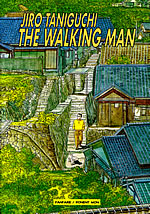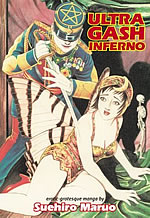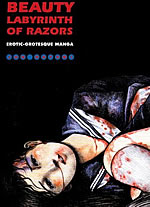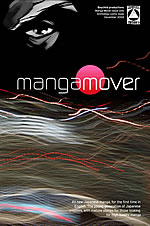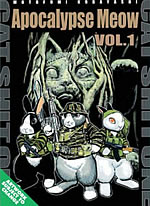Manga-fication:
The Impact Of Manga On US Comics
None other than underground cartoonist Chester Brown drew the front cover of The New York Times Magazine for Sunday July 11th, 2004. In fact, he drew a comic strip, his second page continued inside, to accompany the headline "How Cool Is Comics Lit?". I eagerly anticipated reading the 13-page lead article on the "new" literary graphic novels, concentrating on the current American and Canadian canon by Spiegelman, Clowes, Ware, Seth, Sacco and Tomine.
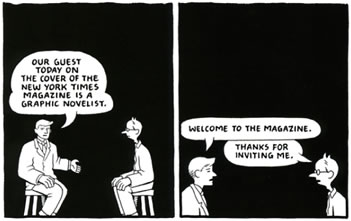
By the end, however, much as I appreciated this high-profile and largely positive exposure, some of journalist Charles McGrath’s sweeping assertions had dampened my enthusiasm. In particular, McGrath describes manga as "those Japanese comic books that feature slender, wide-eyed teenage girls who seem to have a special fondness for sailor suits." Shortly after, he advises Times readers, "You can ignore all this stuff - though it’s worth noting that manga sells like crazy, especially among women."
On the one hand, McGrath encourages the uninitiated to take an open mind and explore the sophistication of "comics lit", while at the same time he puts them off manga by dismissing Japan’s entire comics culture in just two sentences. For all the effusive praise heaped onto the North American artistes singled out here, the entrenched prejudices against comics are never that far away and are now redirected against those foreign, back-to-front titles invading America’s bookstores.
I can understand why some people, including comics aficionados, choose to "ignore all this stuff". There is such a tsunami of the latest translations pouring in every week and such a relative lack of review coverage, even in Comics International, that it becomes a challenge to pick out manga that might appeal to you. Several retailers and others have assured me that there really isn’t much crossover between superhero fans and manga fans. You either like one or the other. Maybe it’s not been helped by specialist shops now tending to display manga and comic books separately, not so much to be segregationist, more for the practical reason that they fit different sized shelving.
Why are they selling? For a start, do the maths. Three dollars buys you twenty something story pages in the average American comic book, say 15 cents a page. Or you could spend ten dollars and get up to 200 pages of story in a manga, around 5 cents per page, or one third of the price. Admittedly, manga usually don’t give you much if any colour, but the screen effects and washes can add a lot to black and white art. And manga tend not to use many panels on each page, but then neither do plenty of US comics these days.
Increasingly, American comics publishers have realised they cannot afford to "ignore all this stuff", as sales of manga skyrocket year-on-year and the books attract lots of brand new readers, many of them young and female. TokyoPop’s market research found that no less than 70 per cent of their readership consists of girls aged 11 to 17, an audience that, aside from Archie, American publishers had all but abandoned. They are seeing a fresh generation who are getting hooked on comics and may well stick with them into their twenties and beyond.
No wonder DC, Marvel, Oni, Salve Labor and others are adopting the 5 x 7 inch, DVD-sized manga paperback to package their own material, even labelling it "manga", from Elfquest and Strangers In Paradise reprints to compilations by Andi Watson or Lea Hernandez. The ‘Manga-fication’ of American comics has also gone beyond imitating a set of styles and techniques to commissioning Japanese writers and artists themselves to work directly for the US market.

Here in Britain, three independent outfits have entered the manga field recently. Stephen Robson of Fanfare is working with Spanish publishers Ponent Mon to release their programme of sophisticated adult manga into English. Their release, The Walking Man, follows the detours and daydreams of a city dweller as he reconnects with the natural world, drawn in breathtaking detail by Jiro Taniguchi. I can’t think of a better choice to show a New York Times sceptic how subtle and sublime Japanese comics can be.
At another extreme are Creation Books who began with Suehiro Maruo’s Ultra-Gash Inferno and next year release their second manga in the ‘erotic-grotesque’ genre, an avant-garde mix of porn, violence and horror with flourishes of the surreal. Beauty Labyrinth Of Razors’ excesses are not for anyone with a weak stomach, although surprisingly many of creator Jun Hayami’s admirers are young women, who send him love letters, often with gifts of their used underwear to sleep with under his pillow.
The third publisher is Boychild Productions headed by the Scottish writer and film director Sean Michael Wilson based in Tokyo. In the first issue of his 68-page anthology Manga Mover (in US comic book size), Sean introduces four artists unknown in the West: Hisaki Sakurai, whose sequel to The Ring, adapted from the novel Spiral, is just out from Dark Horse; biker grrrl Misako Rocks with her fusion of shojo or girls’ manga and US autobio comix; Tomoko Amemiya and her cool serial thriller; and, on a story written by Sean, Juan Chavarriga, a manga-influenced Argentinian artist living in France - proof of manga’s global reach.
From Digital Manga‘s ‘boys’ love’ gay romances for girls to ADV‘s Apocalypse Meow, Vietnam fought between bunnies and cats, you ignore manga at your peril - or at the risk of missing out on some wonderful stories and art!
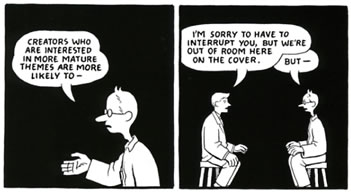
Chester Brown’s two page comic strip which originally appearred in the New York Times Magazine on 11 July 2004 is reprinted in Paul Gravett’s book Graphic Novels: Stories To Change Your Life. The original version of this article appeared in 2004 in Comics International, the UK’s leading magazine about comics, graphic novels and manga.













